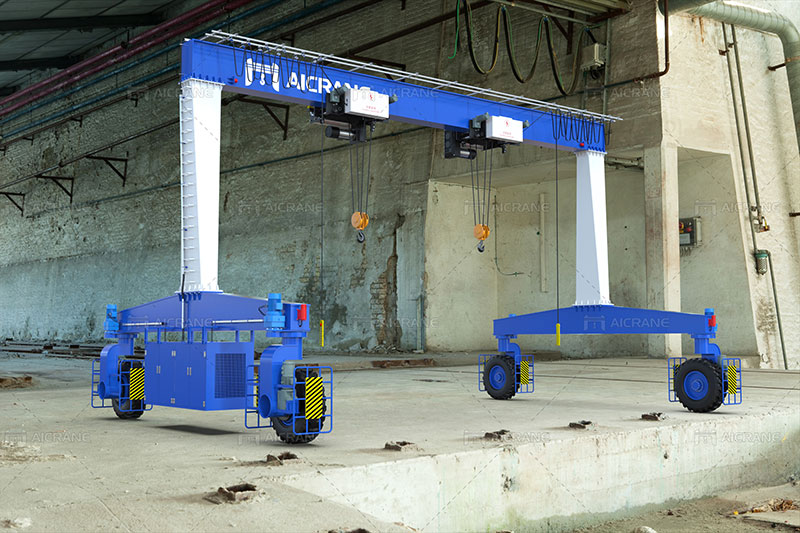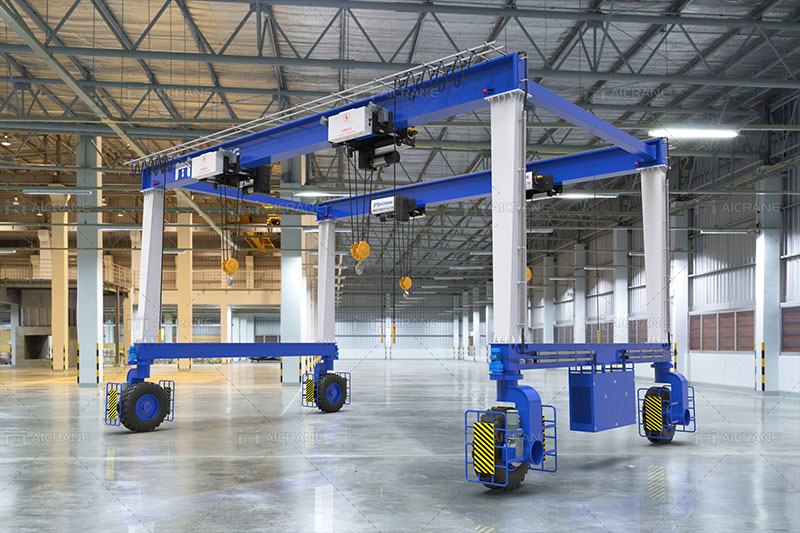In the realm of heavy lifting and industrial operations, mobile gantry cranes have emerged as indispensable assets, offering unparalleled flexibility and agility in dynamic work environments. These innovative cranes combine the robust lifting capabilities of traditional gantry systems with the mobility required to navigate diverse job sites, making them ideal for a wide range of applications across various industries. This article delves into the features, benefits, and applications of mobile gantry cranes, highlighting their role in enabling on-site agility for dynamic operations.
Versatility and Flexibility
Mobile gantry cranes are designed to be highly versatile, allowing them to operate effectively in locations where fixed infrastructure is impractical or unavailable. Unlike stationary gantry cranes that are anchored to a specific location, mobile gantry cranes are equipped with wheels or tracks that facilitate easy movement within a work site. This mobility enables operators to position the crane precisely where it’s needed, adapting swiftly to changing project requirements.

Key Features of Mobile Gantry Cranes
One of the defining features of mobile gantry cranes is their portability. These cranes can be transported from one location to another using trucks or trailers, making them suitable for both indoor and outdoor applications. Despite their mobility, mobile gantry cranes maintain robust lifting capacities, often capable of lifting heavy loads ranging from several tons to over a hundred tons, depending on the model.
Furthermore, mobile gantry cranes are designed with adjustable heights and spans, allowing operators to customize the configuration to suit specific lifting tasks and spatial constraints. This adaptability ensures optimal performance and safety in diverse operating environments.
Applications Across Industries
Mobile gantry cranes find widespread use in industries such as construction, manufacturing, warehousing, and shipbuilding, where the ability to mobilize lifting equipment is crucial for project success. In construction, mobile gantry cranes are deployed for lifting and placing heavy building materials, such as steel beams, precast concrete panels, and machinery components, at various stages of construction projects.
In manufacturing facilities, mobile gantry cranes facilitate efficient material handling and equipment installation, optimizing production workflows and minimizing downtime. These cranes are also employed in warehouses and logistics centers for loading and unloading cargo, maximizing storage capacity and streamlining distribution operations.
Additionally, mobile gantry cranes play a vital role in shipyards and ports, where they are used to lift and move ship components, containers, and machinery with precision and reliability. The mobility of these rubber tyred cranes allows operators to navigate around vessels and tight spaces, enhancing productivity and safety in maritime environments.

Advantages of Mobility
The mobility of gantry cranes offers several distinct advantages over fixed gantry systems. First and foremost, mobile gantry cranes eliminate the need for costly infrastructure modifications, such as permanent rails or foundations, reducing installation time and project expenses. This portability also enables rapid deployment to remote or temporary work sites, facilitating efficient project execution even in challenging or remote locations.
Moreover, mobile gantry cranes enhance operational flexibility by enabling quick repositioning in response to evolving project demands. This flexibility is particularly advantageous in industries characterized by fast-paced construction schedules, where the ability to adapt quickly to changing conditions is essential for project success.
Safety and Efficiency
Despite their mobility, safety remains a top priority in the design and operation of mobile gantry cranes. These indutrial cranes are equipped with advanced safety features, including overload protection systems, emergency stop controls, and anti-collision sensors, to ensure safe lifting operations in complex environments.
Furthermore, the mobility of these cranes enhances operational efficiency by minimizing downtime associated with material handling and lifting tasks. Operators can optimize crane positioning to reduce travel distances and streamline workflow, ultimately improving productivity and project timelines.
Future Trends and Innovations
Looking ahead, the future of mobile gantry cranes is poised for further innovation and technological advancements. Emerging trends such as automation, IoT connectivity, and remote monitoring are expected to enhance the capabilities and efficiency of mobile gantry crane systems. Automation technologies, including self-driving capabilities and remote operation, will enable increased productivity and safety in industrial settings.
Additionally, advancements in materials and manufacturing techniques will continue to optimize the performance and durability of mobile gantry cranes, making them even more adaptable to a broader range of applications and operating conditions.
In conclusion, mobile gantry cranes represent a paradigm shift in the field of heavy lifting equipment, offering unparalleled versatility, mobility, and efficiency for dynamic operations across industries. As technological advancements continue to drive innovation in crane solution design and functionality, mobile gantry cranes will play an increasingly vital role in supporting agile and responsive operations in modern industrial environments.
